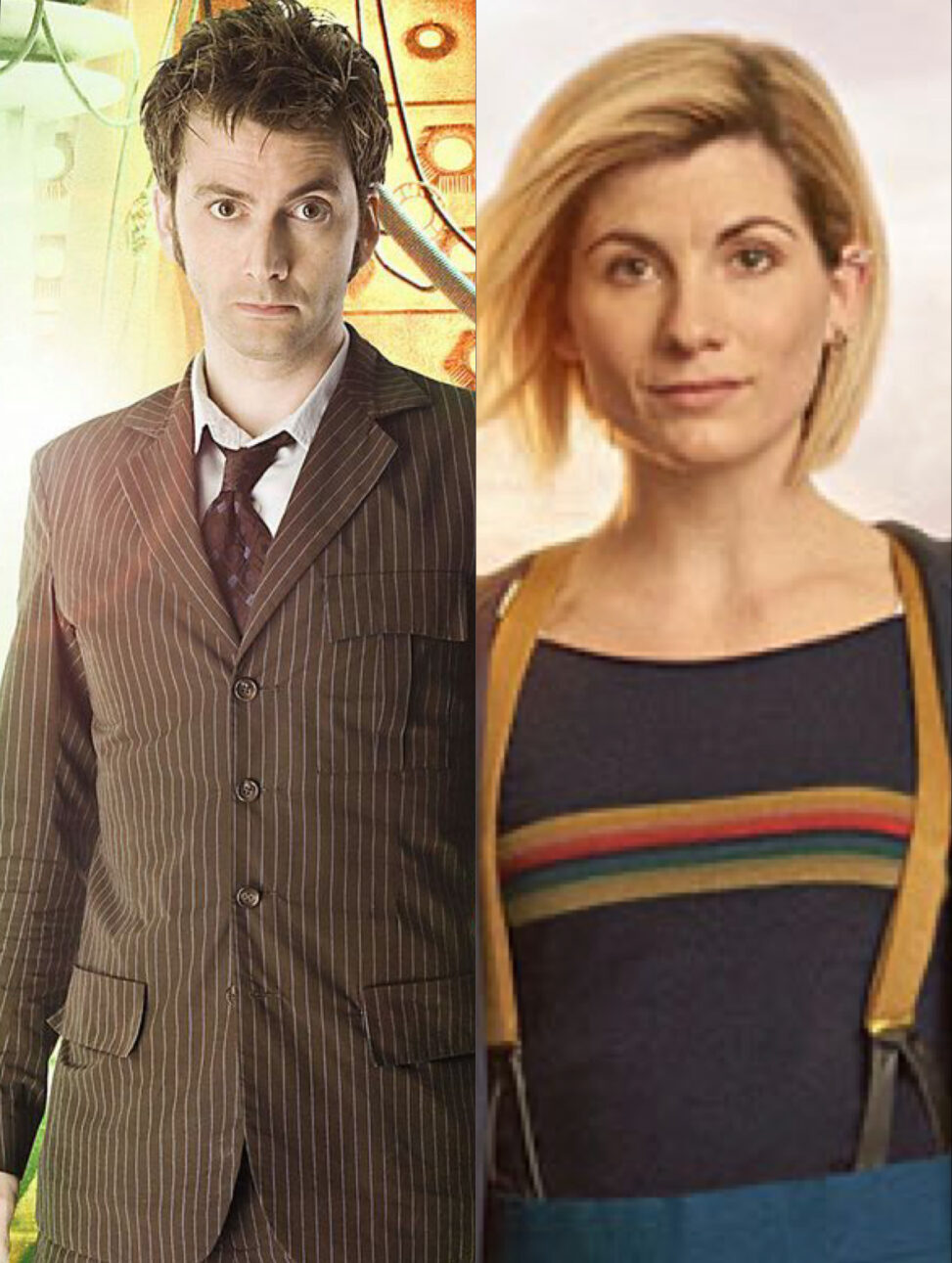Being the longest-running science fiction TV series, Doctor Who has seen a wide range of male actors take on the role of the Doctor since its initial run from 1963 to 1989 and its new era beginning in 2005.(1) For much of Doctor Who, women have been sidelined and mainly portrayed as the companion to the Doctor, but that is until the 13th Doctor was casted as a woman. Although this new female protagonist stirred up a lot of backlash, it also gave the female audience of Doctor Who a further sense of belonging within the science fiction world. It has been inevitable that the Doctor would be played by a woman eventually because of the gender fluid undertones and species of Time Lords within the series already.
This time and space binding series follows a character that goes by the title “the Doctor” and is of the Time Lord species from the planet Gallifrey. When Time Lords are on the brink of death, they can regenerate and become a new person. Although they look different after each regeneration, Time Lords are still the same person inside and have the same memories as before. With each regeneration, they just develop new characteristics that blend with or replace the old. As the Doctor has only been portrayed by white men since the series premiered, female characters have taken a sideline. In Doctor Who, the Doctor is often accompanied by a young conventionally attractive woman who is known as his “companion” or “assistant.”(1) It may seem as though the companion character is as important as the Doctor is, but really the companion acts as more of an accessory. The companion changes more often than the Doctor regenerates, making the companion seem disposable.(2) The Doctor and his companions are never really seen as equals since the Doctor “is active and/or intellectual, independent, lonely (or at least solitary) and heroic,”(2) while the companions “tend to be emotional, passive or dependent so the Doctor can function as their champion and rescuer.”(2) The only female character in this series who has been an equal to the Doctor is River Song, but her rare appearances in the series still make her a set apart female character. It is not until 2017 that a woman is the lead in the Doctor Who series.
Not long after the announcement that Jodie Whittaker would be the 13th Doctor, many fans were against the idea of there being a female Doctor. Most of these negative reactions coming from men who were “disgruntled over the loss of a male role model.”(1) Despite the backlash, many female fans were ecstatic that it was finally their time to have someone to represent them in the science fiction genre, which has been overly male centric for years. In the study done by Neta Yodovich on female fans reactions to the first female Doctor, many of the women touched on the fact that they have become accustomed to having male role models because of the limited options. These women also point out that “a female heroine could be inspiring for both boys and girls.”(1) Many of the male fans also argued that the casting of a female Doctor is just the show trying to be more progressive. While this may be a small part of the case, it is canon in Doctor Who that Time Lords can regenerate into any gender. The biggest example of this being when one of the Doctor’s Time Lord nemeses, the Master, regenerated from a man to a woman.(1)
Even just the idea that the Doctor can be any gender is a powerful message to viewers. If a little girl sees Jodie Whittaker’s 13th Doctor, she will realize that she can also have all the attributes that the Doctor has. Or the little girl could realize that her capabilities are not that different from her male counterparts as the 13th Doctor is not confined to things like gender stereotypes: During the 13th Doctor’s era, the Doctor was still going on time and space travel adventures like the Doctors before. The gender fluidity of the Doctor has also brought in countless transgender fans. Numerous trans people have used Doctor Who as a way of “understanding themselves, for imagining that gender affirmation and euphoria are possible.”(3) Even though it is acknowledged that the 13th Doctor appears as female, the character still dresses on the more masculine side with a few hints of what are considered feminine accessories; blurring the lines of gender expression and identity.
As Doctor Who contains genderfluid undertones and a genderfluid species called the Time Lords, it was inevitable that the Doctor would be portrayed by a woman at some point. By casting Jodie Whittaker as the 13th Doctor, the series made the dauntless decision to pull female characters from the sidelines of Doctor Who and into the spotlight. By doing this, not only female fans, but transgender fans resonated more with the series and felt a sense of belonging in a male-dominated genre. The 13th Doctor has demonstrated that lead characters do not have to strictly identify a certain way, but that they can be fluid in how they express or identify themselves.
Bibliography
Yodovich, Neta. “‘Finally, We Get to Play the Doctor’: Feminist Female Fans’ Reactions to the First Female Doctor Who.” Feminist Media Studies 20, no. 8 (2020): 1243-58. https://doi.org/10.1080/14680777.2020.1810733.
Jowett, Lorna. “The Girls Who Waited? Female Companions and Gender in Doctor Who.” Critical Studies in Television: The International Journal of Television Studies 9, no. 1 (2014): 77-94. https://doi.org/10.7227/cst.9.1.6.
Hagen, Damien. “Regeneration and Trans Possibility in Doctor Who.” Transformative Works and Cultures 39 (March 2023). https://doi.org/10.3983/twc.2023.2281.


Fatima Keita
The student offers a thoughtful exploration of gender roles within the long-running science fiction series. The author effectively contrasts earlier portrayals of women as companions with the groundbreaking shift of Jodie Whittaker’s 13th Doctor. They clearly identify how female characters were historically sidelined and how the 13th Doctor challenges those conventions by embodying traits once reserved for male heroes.
The analysis successfully highlights the similarities and differences between the traditional and modern depictions of the Doctor. Earlier female companions are described as emotional and dependent, while the 13th Doctor is presented as independent, intellectual, and gender-fluid. This comparison is well-supported through references to scholarly sources, particularly Neta Yodovich’s study on fan reactions and broader discussions of gender representation in science fiction. The inclusion of trans and nonbinary viewers’ perspectives further strengthens the argument by expanding the discussion beyond gender to identity and inclusivity.
However, the analysis could have delved deeper into how the visual design of the 13th Doctor (such as costume, body language, and cinematography) reinforces or complicates her gender expression. Additionally, exploring audience reception through visual or cultural theory could enrich the critique of how viewers interpret gender on screen.
Overall, the submission is a strong, well-researched comparison that demonstrates how Doctor Who’s evolving depiction of the Doctor reflects broader cultural shifts toward gender inclusivity and representation.